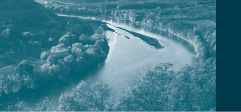Increase funding and support for urban forestry and parks
Action
Urban trees, parks, and gardens can reduce stormwater runoff, air pollution, energy use in buildings, and noise. They also can increase the value of nearby homes, support physical activity, and improve public health. When urban parks are designed and maintained as an interconnected system, their ability to support biodiversity, manage stormwater, provide recreation, and expand available transportation options through trail networks increases. The State can support urban forestry and park access by increasing funding and providing technical support.
Process
States can designate an office to focus on urban forestry that can acts as both a resource and an advocate for urban forestry issues. This The office, in turn, can partner with other state agencies, and draw on the experience and assistance resources of such national organizations such as the National Urban and Community Forestry Advisory Council.
The State can work with the parks departments of the state's major urban areas to conduct tree inventories and assess tree canopy status and trends. This effort can be coupled with broader assistance to urban park departments to assess the condition of current parks and the need for additional ones. The latter activity might include inventorying vacant land andor abandoned properties, some of which may be appropriate for redevelopment, but some of which may be appropriate for (and already used as) neighborhood gardens or public green space.
The State can create a competitive grant process for urban park, forestry, and garden projects. Criteria for funding could include how well the project provides a wide range of urban green space benefits. For example, emphasis might be placed on ensuring all residents (including under-served communities) have access to green space; promoting connectivity across urban green spaces; protecting drinking water sources; or encouraging management approaches that emphasize native trees and plants,. or hybrids adapted to local conditions (thereby promoting green infrastructure function and restoration).
The State can pool grant funds from across state agencies with related interests. This might include non-environmental agencies, such as housing and urban development, since because the amenities from the anurban forest can increase home values and nurture a strong sense of community.
Examples
- Michigan’s Detroit Urban Ecosystem Analysis
Michigan’s Department of Natural Resources joined with the U.S. Department of Agriculture and American Forests, a nonprofit group, to study the infrastructure benefits of trees and natural land cover in southeast Michigan, a nine-county area that includes Detroit and its suburbs. The study illustrated and quantified the financial and environmental management benefits that could be achieved by protecting and restoring the area’s urban forests.
— Michigan Department of Natural Resources
— Study of Southeast Michigan's Land Reveals Tree Canopy Acts as a Public Utility, American Forests
— National Urban and Community Forestry Advisory Council


